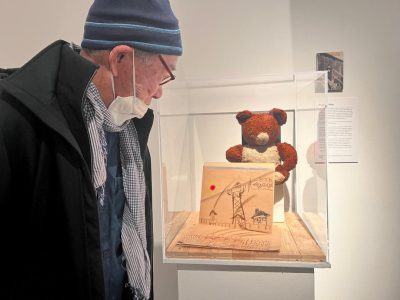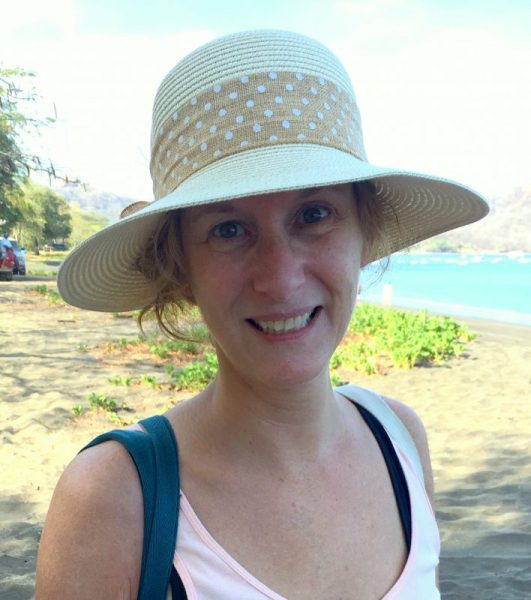World War II Internment Camp Survivor Tells His Childhood Story
News Based on facts, either observed and verified directly by the reporter, or reported and verified from knowledgeable sources.

Kenji Ima was only four years old when he and his family were ordered to leave their Seattle home, all their possessions and the hotel they owned, and were sent to Minidoka, an American internment camp in Idaho.
The United States’ involvement in World War II had just begun following the bombing of Pearl Harbor by the Japanese, and soon after the U.S. government forcibly incarcerated more than 120,000 people of Japanese descent, housing them at 75 different camps nationwide. Minidoka housed over 13,000 Japanese Americans.
Ima, 85, still remembers the pervasive smell of sage brush in the Idaho desert along with breathing air saturated with dust as he, his brother and parents struggled to live a normal life in one bare, dimly-lit room with a potbelly stove for heat and thin cots to sleep on.
“No one knew what would happen to us,” Ima recalled. “We knew we had been incarcerated without due process, maybe they would shoot us or send us back to Japan or even to another camp.”
Ima, a third-generation American, will be speaking publicly about his three years as a child living at Minidoka and being a camp survivor on Wednesday, June 7 at the Hudson Valley Books for Humanity in Ossining at 7 p.m. The program, “In Conversation with Kenji Ima, WWII Camp Survivor,” will start with teen members of The Bittermelon, a local support group helping youth and families of Asian-American identities. Ima’s daughter, Kim Ima, will join her father for a talk, followed by questions from the audience.
Uncertainty and despair were prevalent for those living in the internment camps that operated from 1942 to 1945. Vivid images of the camp for Ima include the large expanse of some 500 tar-papered buildings forming blocks, each block having 12 barracks for living quarters.
“We were four of us in one room that measured about 15 by 15 feet,” Ima said. “There was no insulation and it was very cold in the winter.”
Ima said each block was like a small village and there was a public bathhouse to shower and to wash clothes and a huge mess hall where all the families would eat. Ima’s father was a cook at one of the mess halls.
Constant reminders that they were prisoners included high barbed wire fencing, guard houses and soldiers with machine guns.
But life for a four-year old in an American internment camp wasn’t all terrible.
“There were lots of kids to play with and we had a lot of free time,” Ima said. “There was, for children, a sense of freedom.”
Youngsters attended school and Minidoka residents formed baseball teams, musical groups and holiday events, and produced a camp newspaper.
When his family moved back to Seattle after the war, they were able to continue to run their hotel. But Ima said there was still very strong anti-Asian sentiment.
“It was my home and we were seeing signs on shops and in the grocery store that said ‘No Japs Allowed.’ My brother and I felt we weren’t welcome but we had to learn to get along. We also had to be careful because we never knew what would happen to us if we overstepped some line.”
Ima, a San Diego resident, went on to became a sociologist and currently works with immigrants trying to assimilate into American communities. He said today’s racial prejudices target not only Asians but all people whose skin is not white.
“The whole issue of whiteness being preferential has seen a rise to anti-Asian and anti-Black sentiment,” he said. “Even today, although I am third-generation American, people still ask me where I am really from. My experience of being incarcerated tells me that there are still so many ways people disregard the rights of others.”
Kim Ima, who lives in Ossining, wrote “The Interlude,” a play based on her father’s childhood experience, which was performed in 2004 at La MaMa Theatre in New York City. Performances were also held at history classes at the Bronx High School for Writing and the Creative Arts serving Black, Hispanic and Arab American students.
Ima’s daughter, Kim, is an active member of the New York Chapter of the Day of Remembrance, a national organization created to mark President Franklin D. Roosevelt’s Executive Order 9066 in February 1942, authorizing the U.S. military to forcibly incarcerate Americans of Japanese descent.
“The important message is to remember the past and not to make the same mistake again,” Kenji Ima said. “Keeping Americans free is a constant battle, and if you’re not careful a fascist country could emerge.”
Hudson Valley Books for Humanity is located at 67 Central Ave. in Ossining. For more information, call 914-847-0773 or visit www.hvbooksforhumanity.com.

Abby is a local journalist who has reported on breaking news for more than 20 years. She currently covers community issues in The Examiner as a full-time reporter and has written for the paper since its inception in 2007. Read more from Abby’s editor-author bio here. Read Abbys’s archived work here: https://www.theexaminernews.com/author/ab-lub2019/
